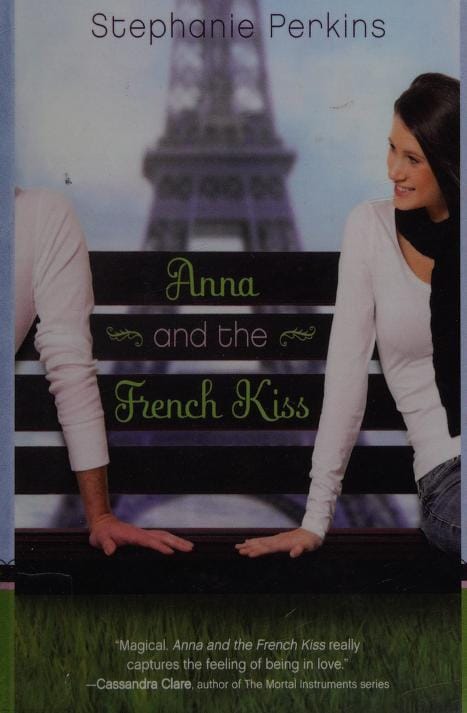Anna and the French Kiss: Why Stephanie Perkins’ YA Romance Still Captivates
A spoiler-free review of Stephanie Perkins’ YA classic "Anna and the French Kiss," covering plot, themes, characters, and why this Parisian romance still shines.

Introduction: A YA Classic That Keeps Finding New Fans
"Anna and the French Kiss" by Stephanie Perkins debuted in 2010, yet the novel remains a must-read for lovers of young adult (YA) romance. Set against the dreamy backdrop of Paris, the story follows American teen Anna Oliphant as she spends her senior year at the fictional School of America in Paris (SOAP). With fresh humor, swoon-worthy chemistry, and relatable coming-of-age struggles, Perkins delivers a book that consistently lands on "Best YA Romance" lists. Whether you are discovering the novel for the first time or coming back for a reread, this guide will help you appreciate its enduring charm.
Plot Overview: From Atlanta to the City of Light
The novel opens with Anna reluctantly boarding a plane to France after her father—a Nicholas Sparks–esque novelist—decides an overseas education will add polish to his daughter’s résumé. Lonely and jet-lagged, Anna quickly meets Étienne St. Clair, a Franco-American classmate whose British accent and easy charisma make him the undisputed darling of the school. Despite Étienne’s long-term girlfriend, the two form an instant bond that deepens through late-night phone calls, museum trips, and café explorations. Jealousy, misunderstandings, and family secrets complicate their relationship until a climactic New Year’s Eve confession finally allows the pair to admit what readers have known all along: they’re perfect for each other.
Characters: Relatable, Flawed, and Lovable
Anna Oliphant is no manic-pixie stereotype. She geeks out over classic films, keeps a meticulous review blog, and panics at the thought of ordering food in bad French. Her awkwardness makes her immediately sympathetic. Étienne, meanwhile, could have been a cardboard dream guy, but Perkins imbues him with depth: a fear of heights, an ill mother, and a complicated relationship with his absentee father. Secondary characters—including Meredith with her soccer-player grit, Rashmi with her sharp intellect, and Josh with his sketchbook—round out a friend group that feels authentic. Their banter mirrors the real rhythms of senior-year friendships, where humor, loyalty, and drama collide daily.
Major Themes: Identity, Independence, and Home
On the surface, "Anna and the French Kiss" is a romance, but its thematic core explores something larger: the search for identity. Anna must figure out who she is when removed from her Atlanta safety net. The novel also probes independence. Étienne faces a tough decision about where and how to pursue college away from his controlling father, while Anna learns to navigate a city where every bakery order doubles as a mini language test. Finally, the book asks where “home” truly is—Paris, Atlanta, or perhaps the people who understand you best.
Paris as a Character: Croissants, Cobblestones, and Cinémathèque
Perkins’ Paris isn’t a postcard cliché; it is a living, breathing city that shapes every chapter. From Notre-Dame’s gothic spires to the cramped red seats of a Latin Quarter cinema, the setting amplifies each emotional beat. Readers taste chocolat chaud in tiny porcelain cups and feel the midnight chill on the banks of the Seine. The meticulous sensory details ensure that the city functions as an unofficial cast member—seductive, complex, and wholly unforgettable.
Reading Experience: Fast-Paced Yet Emotional
Thanks to Perkins’ breezy prose and razor-sharp dialogue, the 372 pages fly by. Chapters often end on mini cliff-hangers—an unanswered text, a sudden snowstorm, a lingering glance—making it easy to promise "just one more" and find yourself finishing at 2 A.M. Yet beneath the page-turning momentum lies an emotional honesty that resonates with teens and adults alike. Scenes such as Anna’s phone call home on Thanksgiving or Étienne’s visit to the Pantheon to confront his fear of heights deliver genuine vulnerability that lifts the novel above fluff.
Why Read It in 2024?
In a crowded YA market, "Anna and the French Kiss" still stands out for three reasons. First, its portrayal of healthy communication—even amid mistakes—models relationships built on respect. Second, the book celebrates cultural curiosity without exoticizing its setting; Anna learns from Paris rather than merely consuming it. Third, the novel has spawned two companion books, creating a mini-universe that rewards dedicated readers. If you crave escapism that also offers emotional depth, this decade-old gem feels remarkably contemporary.
FAQs: Quick Answers for Curious Readers
Is the book appropriate for younger teens?
The novel includes mild language and closed-door intimacy. Most libraries shelve it for ages 14+, but parental discretion is advised.
Do I need to speak French to enjoy the story?
No. French phrases are brief and context clues make meanings clear. Anna herself begins the story with limited knowledge of the language.
Is "Anna and the French Kiss" part of a series?
Yes. While it can stand alone, two companion novels—"Lola and the Boy Next Door" and "Isla and the Happily Ever After"—feature overlapping characters and offer satisfying updates on Anna and Étienne.
Where can I buy or borrow the book?
You’ll find it at major retailers like Barnes & Noble, indie bookstores, and digital platforms such as Kindle, Apple Books, and Audible. Local libraries often carry both physical and e-book editions.



